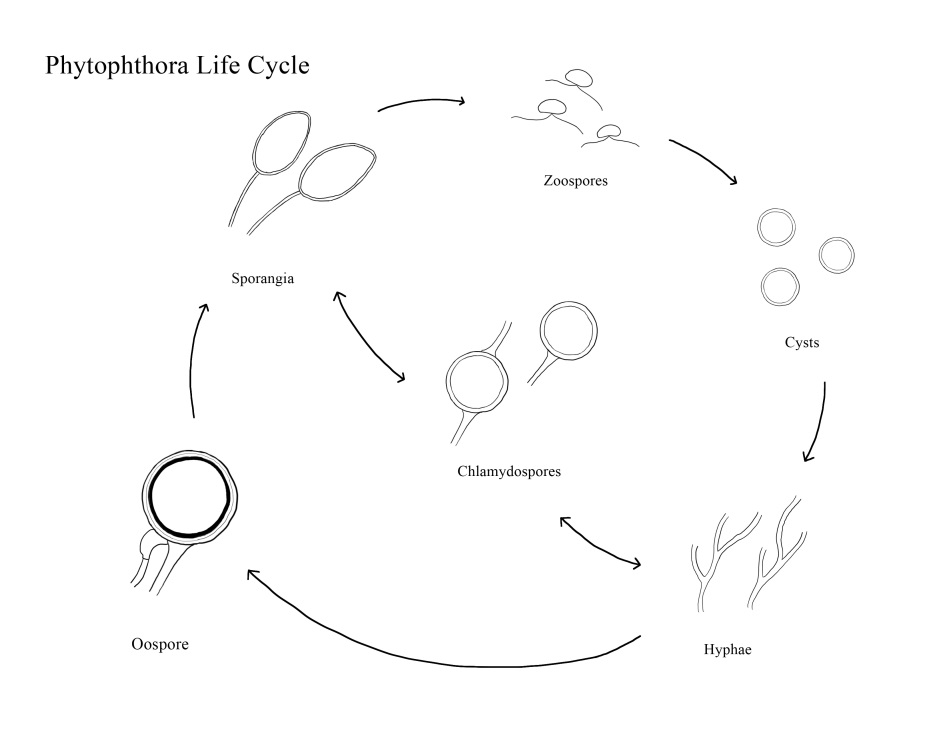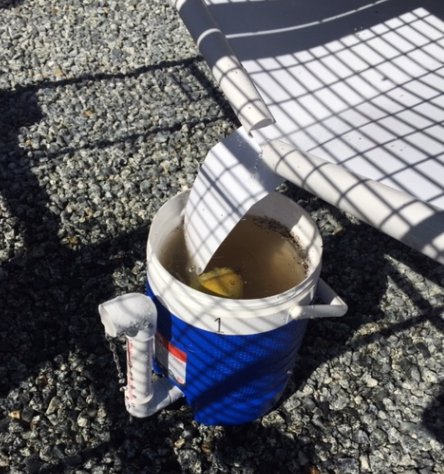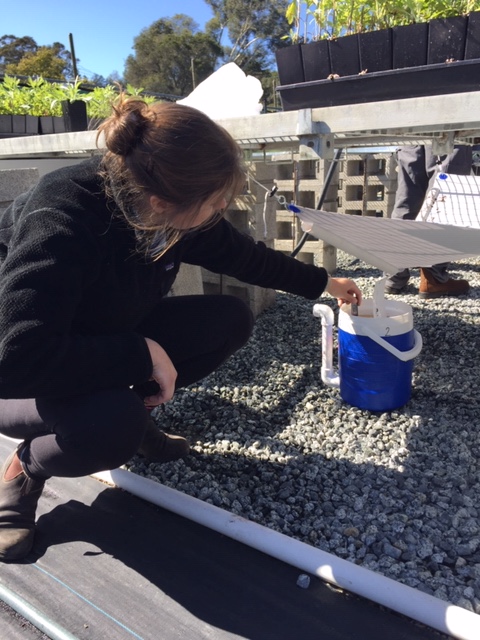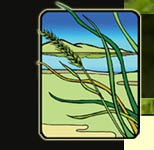Pre-“pear” for Take-off: Pre-Delivery Pear-baiting for Phytophthora at CCW
Story and photos by Maddie Ginn
- As a precursor to this article please refer to our article Best Management Practice Success at Central Coast Wilds for information on Phytophthora species and protocols to prevent inoculation of nursery stock here at CCW.
When I first heard that a new method on the rise, “pear-bait testing”, could identify Phytophthora and Pythium species in our nursery plants, quite a few visuals of what the test might look like came to mind, and only a few of those involved any fruit. Pear-bait testing is in fact aptly named: we use pears, organic, green, and unwounded, as bait for various pathogenic species, with a focus on Phytophthora and Pythium species that can infect nursery stock and cause catastrophic results. Pear-baiting is an additional service performed at CCW for our high BMP contract grows, ensuring that all of our plants are healthy, that we are giving these BMP plants the best chance at survival, and that we are 100% positive that we are doing our due diligence in preventing the spread of these deadly diseases.
In the event of plants testing positive for any Phytophthora and Pythium sp., these would be quarantined from adjacent plants for further testing and then destroyed. Where a positive test of Phytophthora ramorum (the species responsible for Sudden Oak Death) is found, plants would need to be immediately destroyed. Subsequently, as mandated by the CDFA, adjacent tables would be quarantined against ANY Phytophthora ramorum host species for the duration of the next THREE YEARS! For a list of these host species, please refer to www.aphis.usda.gov. All this being said, CCW is proud to say that we have yet to find a SINGLE case of any Phytophthora species in our high BMP area, outplanting tens of thousands of clean, High BMP-produced plants every year!

- In order to catch any potential pathogens in our BMP plants, we first place unripe, unwounded pears in water-collection vessels. Wounded/ripened pears become more susceptible to other pests/pathogens aside from our target species, so it is critical to carefully evaluate the pears upon selection.
- The collection vessel (aka a cooler fixed with an overflow pipe) is placed beneath the batch of test plants. Waterproof vinyl flashing is attached beneath the plants to catch the run-off water.
- Using a precise irrigation schedule, each test plant is irrigated for a total of six times in 15 minutes intervals. During this time, as the containers fill with water, the pears float to the surface of the water column, which is incidentally also what zoospores of Phytophthora and Pythium species do!
- These zoospores (a short-lived single cellular life stage of these species), attack the pear in mass to create characteristic lesions on the pear, sometimes a notable “bathtub ring” formation. These lesions can appear directly after testing, but can sometimes take up to 8 days to appear. During this waiting period pears are incubated in temperatures between 18°C - 24°C, as different species prefer various temperatures for growth.
- Symptomatic pears are shipped off to the CDFA Plant Pest Diagnostics Center where they can be identified to genus/species. CCW sends ALL of our test pears to the lab in order to ensure that potential pathogens are correctly identified, guaranteeing that any of our plants going out for contract are pathogen free for your ecological landscapes and restoration projects!
See below for photos of CCW’s in-house pear-baiting service.




























